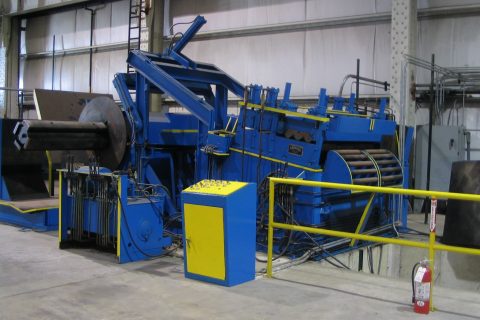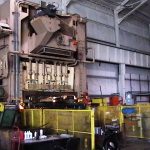A blanking line is a process where square, round or rectangular parts are mechanically or hydraulically pressed or stamped out of a coil. A blank is sometimes also referred to as a flat sheet of material cut to a very precise length and corner-to-corner tolerance, say off of a cut to length line.
A master coil of feedstock is placed on an uncoiler. After peeling the head of the coil, the leading edge of the coil is feed into a flattener or leveler to remove any stresses in the material and assure the part to be cut out will remain flat in downstream processes. Servo feed rolls push the material into a loop just prior to the press. With each cycle of the ram in the press a measured length of material is fed into the press on the upstroke. The strokes per minute can vary from 6 to 60 strokes per minute. Say a blanking press runs at 40 strokes per minute (SPM), so each hit takes 1.5 seconds. Hypothetically, let’s say that for one application involving mild steel, 1 second of that 1.5-second cycle is needed for feeding, and 0.5 second is needed for the clamping and cutting. However, today’s new high-strength steel (AHSS) may require 1 second for clamping and cutting. This also doubles the feeding time, increasing it to 2 seconds. That increases a total cycle of 3 seconds. So now the press can run at only 20 SPM. The uncoiling of the strip never stops and continually keeps material in the loop. By this method there is no “jerking” of the material off the uncoiler creating issues with length tolerance and possibly damaging the feedstock.





